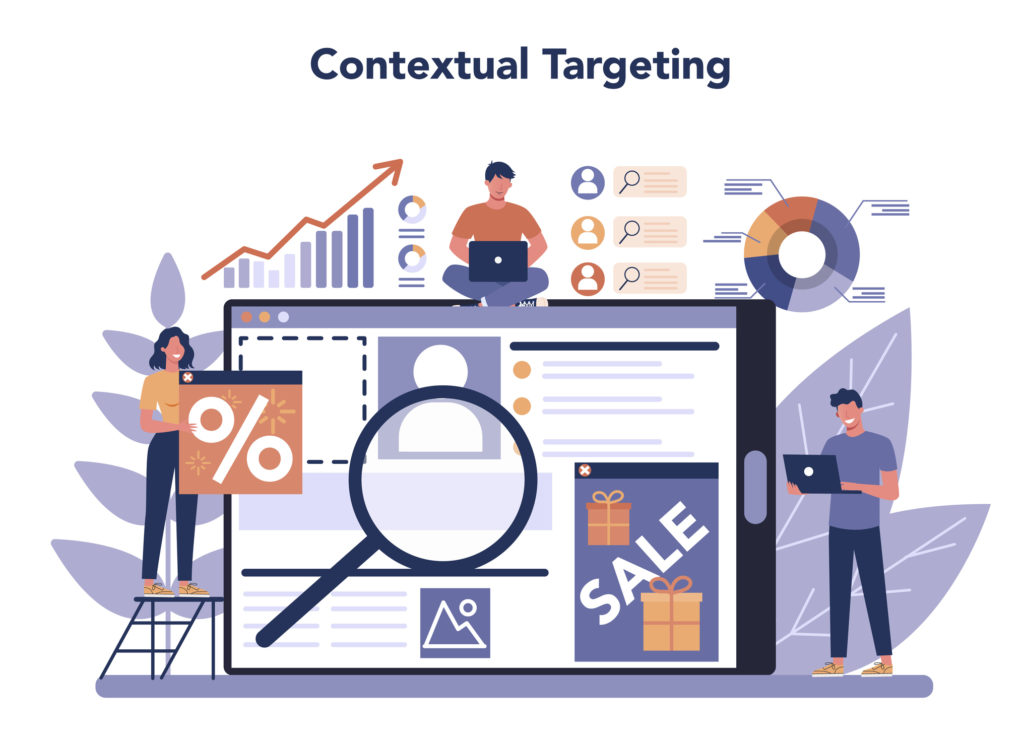
Targeting: effective marketing for each target group
Targeting, or target marketing, is one of the pillars of online marketing. Companies often spend large amounts of money on marketing campaigns.
The objective is to make the product known as much as possible in order to increase sales. However, not everyone is equally interested in the promoted product. Targeting should therefore ensure that only customers are potentially interested in the product. Can see the banner ads, videos, or search engine ads.
Among all the users of a website, target marketing makes it possible to find a target group. That might be interested in the product or service in question. The more precise the filter restriction is the lower the campaign’s diffusion losses.
Depending on the objective, different targeting methods may be appropriate. Combine and analyze different methods. To adapt your marketing measures to your future or existing customers in an optimal way. Regulating and capping the frequency of advertising insertion can make the difference between a purchase decision or a dropout. Or even banner blindness.
Targeting: definiton
Targeting is an online marketing process that refers to the targeted placement of advertising elements on websites or in search engines. It addresses targets as directly as possible. Personalized advertising is designed to avoid waste. But also to increase sales and build customer loyalty. Keyword targeting is a common tactic. There are several targeting methods with different techniques and text types.
Diffusion loss: definition
When distributing advertising, if you reach a wider field than the initial target. In particular by broadcasting in a wide range of media. The advertising campaign is likely to be in vain.
As long as only a few targeted users are interested in your product. Diffusion and potential sales are not correlated.
Diffusion loss is the difference between the extent of diffusion and the limited number of sales. This leads to unnecessary advertising expenditure.
Therefore, define a target audience and analyze their data on page views, preferred themes, and competitive keywords, in order to set up a targeted dissemination plan.
How does targeted marketing work?
Within an advertising network, the websites exchange data with each other. In order to obtain the most accurate customer profile possible. This is often done via browser cookies. The files contain not only the preferred settings of a website in the browser in question. But also the user data that is of interest for identifying the target group. As: age, gender, region, purchasing behavior, and search history. Network partners use cookies to place targeted advertising on other pages in the network. Before launching a campaign, it is therefore relevant to analyze your data to define your target.
Advertising networks
Advertising networks such as Google AdSense, Amazon PartnerNet, or Facebook Audience Network score points with a multitude of statistical data. This is because their operators are market leaders in their respective fields (search engine, e-commerce, social media).
Millions of users worldwide provide them with personal information, use the search function and share their interests through likes.
Advertisers design their distribution strategy according to these criteria. Ideally, users will then only see the ads they are interested in. For example, if you are looking for a local swimming area (beach, lake, river, etc.). And have indicated your family status or informed on Facebook that you have children. In such cases, it is likely that you will receive advertisements for family accommodation in that area. Or for beach toys. Why each user sees a specific banner depends on the targeting method used.
Building up a loyal customer base
In principle, if you address the right target, you provide users with everything they need or could need. If you are in direct dialogue with your customers. For example, via newsletters or social media, they feel directly involved and valued. This is how you build up a loyal customer base. In addition, the pool of information grows. Which helps you to anticipate the wishes of different target groups.
The use of personal data
However, the use of personal data is also criticized. On the one hand, the digital community is increasingly sensitive to data protection. The concept of a “transparent customer”, for whom a lot of personal data is analyzed. And evaluated or misused, has long since ceased to be a dream of the future. That is why, despite all the zeal for personalized advertising, the security aspect cannot be ignored when processing customer data.
On the other hand, following your customers constantly in every corner of the Net often produces the opposite effect. Potential customers may indeed be irritated. Especially if they receive a personalized advertisement for every new page they click on. Some will then delete their cookies. Capping helps you optimize your targeting by adjusting the frequency of advertisements.
Targeting methods
The result of a marketing campaign depends on customer requests and the choice of targeting method. It is therefore important to take your target into consideration and combine the corresponding targeting tactics. We classify the methods into two categories: technical targeting and user and environment targeting (User- and context-sensitive targeting methods).
Technical methods allow you to analyze how much time your target spends on the Internet. To determine its geographical position and its technical characteristics. Thanks to these methods, you can reach your target if it is receptive to advertising. In addition, you can ensure that terminals and browsers display your advertising media in the best possible way.
Targeting methods that take into account the users and the context in which your content is delivered. Are based on an accurate analysis of the searches and paths taken by your customers on the Web. It is at the intersections of these paths that ads should be placed that users will find useful or interesting.
Temporal targeting

This method includes capping and time-limited switching. Frequency capping means that within an advertising network. Your ad is only displayed at a limited frequency for each user. You can also limit the number of inserts per user.
This technique prevents users who are saturated with ads from barely noticing or rejecting your content. In addition, the placement of advertisements can be limited in time. Ideally at specific times when your target audience makes extensive use of the Internet. This allows you to effectively exploit the potential of a campaign.
Geotargeting

Geographic targeting takes into account the location of the user in relation to your offer. Regional service providers or events such as trade fairs thus benefit from a local strategy.
For example, if you are looking for a locksmith service, the results will suggest services close to your own location. In this way, traders or service providers avoid diffusion losses by limiting themselves to a real customer base.
Regionally limited advertising is also useful in the case of media offers whose copyright laws vary from country to country. You can define the broadcasting area on continents, countries, cities, or even neighborhoods.
Bandwidth targeting

This strategy allows you to identify the bandwidth on which your ad is displayed. On smartphones or devices with slow internet access. Banners or high-quality videos increase the loading time. Some browsers even cancel the loading process, in order to make browsing more comfortable for the user.
With bandwidths, on the other hand, you can score points with a fun video or an attractive banner.
Compatibility Targeting

The display of different websites differs depending on the browser and operating system. In addition, media such as PCs, tablets, or smartphones differ in size and format.
Customizing your banner ads for the most popular formats and browsers ensures that they are presented optimally on each of these media.
For some suppliers, the operating system used by the majority of targets is of interest. The design of the advertising banners must be adapted accordingly.
Software developers, on the other hand, adapt the content of the advertisements to the operating system in question. Do potential customers use Windows, Mac, or Linux? Coordinated advertising offers products compatible with the respective operating system or updates. If your target audience only browses with Chrome or Firefox, simply display the ads on these browsers.
Keyword Targeting

Keyword targeting is a marketing method that presents effective advertising content to users. It is based on their search entries and therefore belongs to search engine advertising (SEA).
The first step is to select the individual keywords that relate to the advertised product. These are defined as target keywords when booking a campaign in the advertising network. As soon as Internet users enter these words into the search engine, the advertisement appears in the results.
For example, if advertising a travel package including flight and hotel on the beach in Tenerife. It is appropriate to select associated keywords such as “beach holidays”, “diving in Tenerife” or “flight to Tenerife”. When users search for “diving” and “Tenerife”, they will receive your offer as sponsored content in the list of results. Provided, of course, that it is sufficiently adapted to their search and that there is not too much competition.
Contextual targeting

Contextual targeting does not modify ads based on individual search terms. But targets topics that potential customers are interested in at the moment.
It is therefore a matter of placing advertising content in the form of text. With appropriate thematic orientation on websites visited by your target group.
Contextual targeting also includes keywords that are relevant to the content of the page in question.
For example, you are looking for a website that offers sales on a wide range of shoes. You click on the first link in your search engine. And on this site in question, a banner ad appears on the side for a shoe sale site.
Demographic targeting

Market research provides statistical data on targets that can be evaluated by marketing analysts. And of course, use to meet their needs.
Clients voluntarily indicate, for example, age, gender, or university degree. Advertisers adapt their content according to these criteria and establish appropriate targeting filters.
Targeting by channel

This type of targeting allocates advertising to specific thematic channels.
A channel comprises a number of sites or subpages on a given theme.
Home advertising, for example, appears on websites dedicated to the home and garden. On building planning sites or in the real estate part of a larger advertising network.
Targeted channel marketing is particularly suitable if you want to promote your own brand. In this way, distribution focuses on those channels that require an interest in your products or content.
Semantic targeting

Semantic targeting is a constantly evolving marketing tool. Instead of using individual keywords, this method decodes the entire textual content of a website. Identifying subtleties such as synonyms or proverbs.
As language is constantly changing, existing databases are constantly evolving.
This technique makes it possible to avoid advertisements that have nothing to do with the subject of a page. And which can be harmful to the company. The tool also improves targeting, as it identifies appropriate sub-pages in certain areas. That would otherwise fall outside the relevant thematic categories.
Behavioral Targeting

Behavioral targeting accompanies potential customers through the network. The tool uses cookies and searches entries to define a customer profile.
For example, if users organize holidays, they then receive travel offers. If users regularly express their interest in a topic by performing several searches. By clicking on advertising banners or by staying on related pages for a long time. The tool stores this information in an algorithmic chain.
The data collected forms the basis of a customer profile on which the network can adapt all existing advertising campaigns. Retargeting works in the same way, but the focus is on the customers that you want to reach directly.
Social Media Targeting

Facebook and other networks have a huge reservoir of user data. Customers entrust their personal preferences to social media, communicate with companies. And connect buyers and sellers.
You can use social media targeting tools to create personalized advertising on the platforms. You can find detailed information about advertising opportunities in social networks in our article about advertising on social networks.
Finally
Targeting makes it possible to get the most out of marketing and targeted advertising. If you know your target and your advertisements are tailor-made. Then the diffusion loss is considerably reduced.
Targeting methods are becoming more and more sophisticated. Thanks to daily analyses, you can measure the effectiveness of your targeting filters. And thus adjust them and react quickly to changes in the market. So that you can make the most of your marketing budget.
If you were interested in this topic, you should also like the articles in the “Acquisition” category. You will find them all here.
Do not hesitate to contact us or to leave a comment, we will be happy to discuss with you.
Stay up to date with what is published in this blog.